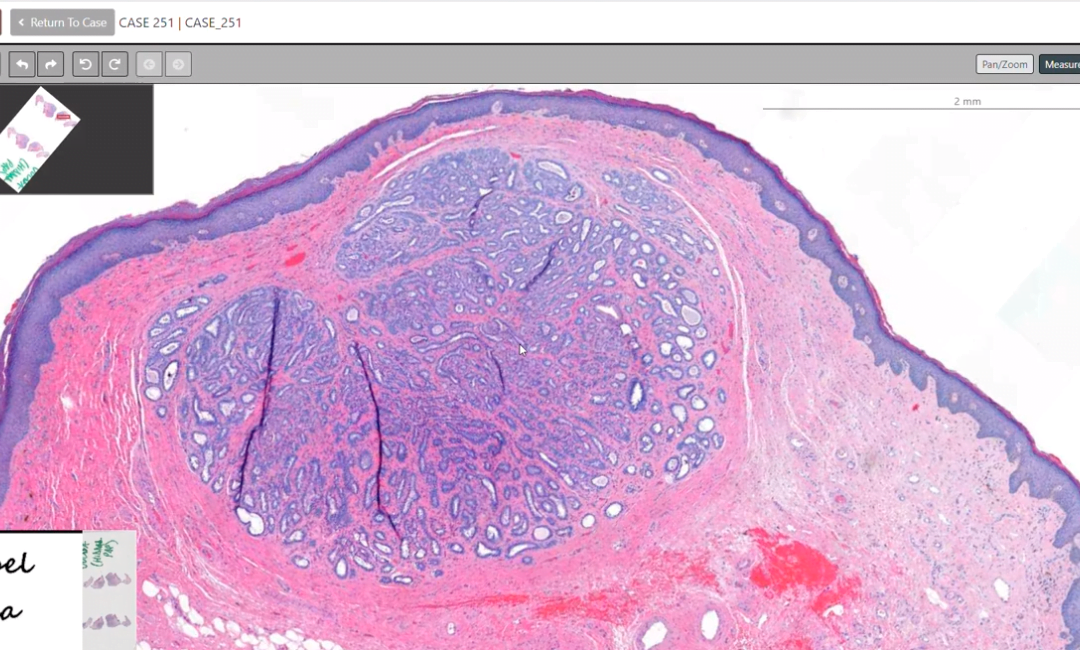Images shown are not intended to be used for the diagnosis or treatment of a disease or condition.
In this episode of Digital Dermatology Digest, things are starting to heat up as dermatopathologist Rajni Mandal, MD, at PathologyWatch discusses sweat gland tumors.
What is a sweat gland tumor?
These skin tumors are often benign and derive from cells related to sweat glands. “Normal sweat glands have ducts and secretory components,” explains Dr. Mandal, noting the different appearance, which shows clear apocrine and eccrine cells.
Here are highlights of the four common types of sweat gland tumors.
- Hidradenoma papilliferum, which is common in the vulvar area. The distinct appearance of this dermal tumor includes papillary folds and the apocrine gland’s decapitation secretion.
- Papillary adenoma often appears in the axilla, the patient’s scalp, and other sites. This is a tumor of the skin, also known as eccrine papillary adenoma, where the tumor forms tubular and tubulopapillary structures.
- Apocrine hidrocystoma is common in the patient’s head and neck as well as the Moll’s gland in the eyelid. It’s a multiloculated cyst with apocrine cells and is often associated with Schöpf–Schulz–Passarge syndrome.
- Poroma is common on the patient’s palms, soles of their feet, and scalp. This benign adnexal neoplasm is composed of epithelial cells that show tubular (usually distal ductal) differentiation.
What is the treatment for sweat gland tumors?
Sweat gland tumors are often benign. However, some patients may prefer to have them removed surgically.
To learn more about this skin condition and other common diseases, join us for each episode of Digital Dermpath Digest right here on pathologywatch.com.

